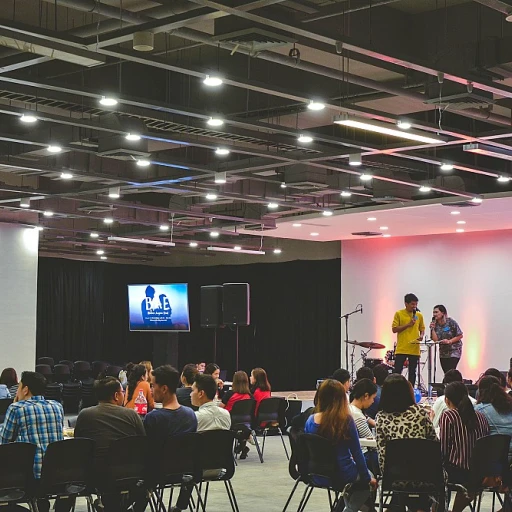The Basics of the New Jersey Sick Time Law
The Essentials of New Jersey's Sick Time Regulations
Understanding the New Jersey Sick Time Law is crucial for both employers and employees, as it sets the foundation for how sick leave is managed within the state. This legislation ensures that employees have access to paid sick leave, acknowledging its significance to public health and individual well-being. For employers, it's important to be aware of the specifics of this law to remain in compliance, thereby avoiding potential legal challenges.
The law mandates that employees are entitled to earn paid sick leave, which they can use for personal health needs or to care for a family member, including a domestic partner or union partner. Employees accrue one hour of paid sick time for every 30 hours worked, up to a maximum of 40 hours per benefit year. This accrued sick leave provides a significant benefit to employees, supporting their health care needs and enhancing job satisfaction.
Employers are required to provide employees with these benefits without discrimination. Whether dealing with full-time, part-time, or seasonal workers, compliance with the sick leave law is non-negotiable. Employers must maintain accurate records of hours earned, leave taken, and notice of sick leave use, supporting transparency and trust in the employment law process.
As we delve deeper into the intricacies of the New Jersey Sick Time Law, it's evident that addressing HR challenges in alignment with legislative compliance is complex. In this context, exploring the role of agentic AI vendors in human resources becomes pertinent. While understanding the nuances of sick leave laws is essential, utilizing AI tools can assist in effective compliance management and optimize HR operations, mitigating some of the challenges associated with maintaining employment standards.
Challenges Faced by HR Professionals
Overcoming Hurdles in Managing Employee Leave
Human resources professionals often face a myriad of challenges when navigating the intricacies of employee leave. The New Jersey Sick Time Law, which permits employees to earn paid sick leave, presents unique difficulties for both HR managers and the employers they represent. Key issues arise from the law's stipulations on accruing sick time and ensuring timely benefits for all employees, including those with civil union or domestic partners.
One of the primary hurdles involves accurately tracking the hours earned by employees toward their sick leave. The law mandates that employees earn one hour of paid sick leave for every 30 hours worked, up to a maximum of 40 hours per benefit year. For HR teams, ensuring compliance with this requirement necessitates meticulous record-keeping and updating employment systems to automatically calculate accruing hours is often easier said than done.
Additionally, the law's provisions extend to care for family members, allowing employees to utilize their earned sick time not just for their own health care needs, but also for those of a family or domestic partner. This expanded definition of family care impacts public health positively, yet places the burden on employers to verify leave requests and ensure they align with legal criteria, while respecting employee privacy rights.
Employers must also provide notice of the available sick leave benefits to their employees, adding another layer of complexity for HR professionals tasked with disseminating this information across their workforce. Furthermore, balancing the need for proper notice with privacy and employment law compliance can create tension in communicating all aspects of the leave law.
These challenges suggest a pressing need for effective tools and solutions that can streamline processes and augment HR capabilities. As businesses weigh the advantages of incorporating advanced technologies, exploring AI solutions in HR could offer relief from some of these daunting tasks.
Role of Artificial Intelligence in HR Compliance
AI's Pivotal Role in Ensuring Compliance
The intricate landscape of employment law in states like New Jersey poses a challenge for employers, particularly when it comes to managing sick leave. AI can play an instrumental role in ensuring compliance with such regulations. By using AI tools, employers can accurately track and manage paid sick time, reducing the risk of non-compliance with the state's laws.
AI-driven systems are designed to recognize patterns and predict potential compliance issues before they become problematic. These intelligent systems can be programmed to notify HR professionals automatically when an employee is approaching their legally mandated hours of earned sick time. This provides the dual benefit of adhering to regulations while safeguarding employee rights.
Beyond mere compliance, AI aids in interpreting the complexities of the New Jersey Sick Time Law, which requires meticulous monitoring of accrued sick hours. As employees earn sick leave, these systems can organize data in real-time, providing employers with quick access to individual employee records. This function is especially valuable for scenarios involving public health concerns, where swift action may be necessary.
Another advantage of incorporating AI is its capability to manage notices and communications regarding sick leave. AI systems can automate the process of sending notifications to both managers and employees concerning their sick leave balances, upcoming earned benefits, as well as any changes in law or employer policies. This is especially crucial when considering the laws protecting domestic partners and civil unions, where specific provisions might apply.
For a deeper understanding of how AI can be integrated into HR processes, including ensuring compliance with regulations like New Jersey's paid sick leave law, AIHR Institute offers resources for exploring opportunities in AI for HR.
AI Tools for Managing Employee Leave
AI Tools Revolutionizing Leave Management
In the ever-evolving landscape of employment law, particularly with the introduction of the New Jersey Sick Time Law, employers face the challenge of efficiently managing employee leave. Artificial Intelligence offers innovative solutions to streamline this process, ensuring compliance while enhancing employee satisfaction.
AI tools are now pivotal in managing leave requests and tracking accrued sick time. These tools automate the calculation of hours earned and notify employees and employers about their leave balance. This automation reduces administrative burdens and minimizes errors, which is crucial given the complexities of the leave law.
- Automated Leave Tracking: AI systems can automatically track sick leave and paid sick leave, ensuring that employees receive their earned sick time accurately. This is particularly beneficial in industries with high employee turnover or where employees work varying hours.
- Predictive Analytics: By analyzing patterns in leave usage, AI can help employers anticipate future leave requests. This predictive capability allows for better workforce planning and minimizes disruptions to business operations.
- Compliance Monitoring: AI tools ensure that employers provide leave benefits in line with the law, reducing the risk of non-compliance penalties. These systems can also generate reports for audits, providing a clear record of leave management practices.
Employers leveraging AI for leave management not only comply with the New Jersey Sick Time Law but also promote a healthier work environment. By providing accurate leave benefits and facilitating easy access to leave, they support the well-being of their employees and their family members, including those in civil unions or domestic partnerships.
As public health concerns continue to shape employment law, the role of AI in managing leave will likely expand, offering even more sophisticated solutions to meet the needs of both employers and employees.












